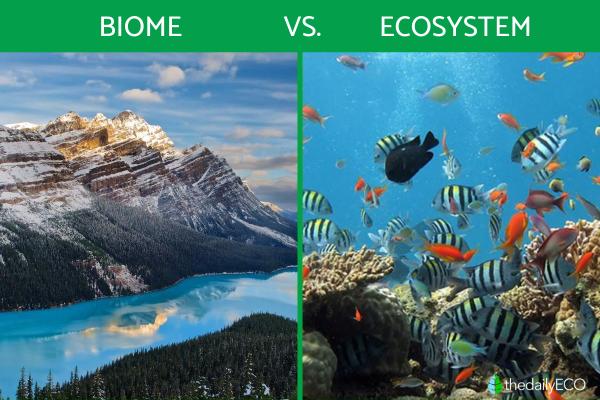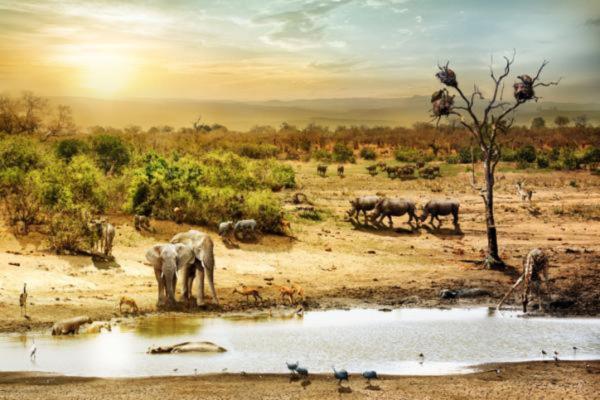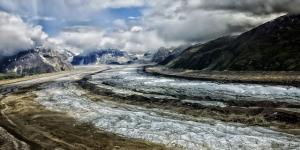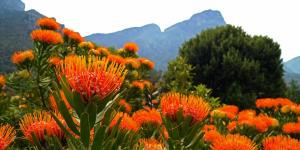The Difference Between Biome vs. Ecosystem


Biodiversity reaches higher rates in tropical biomes than in polar biomes. We know this thanks to studies of the world's ecosystems. Ecologists have been able to confirm the fact that greater diversity in nature occurs closer to the equator by obtaining exact data on the flora and fauna of each biome on the planet. They then contrast the relationships between living beings and the environment of the ecosystem to which they belong.
In reaching this understanding, we have been able to categorize how different forms of life relate to one another. You may have heard these natural areas referred to as ecosystems, but also hear them being called biomes. Some may even think they are the same thing. thedailyECO explains the difference between biome vs. ecosystem by providing definitions and examples of both.
What is a biome?
The simplest definition of a biome frames them as a set of ecosystems located in a certain biogeographic zone of the planet. Within these sets of ecosystems, certain well-defined environmental and ecological characteristics occur.
Coming from the Greek bios (meaning ‘life’), the term biome is defined from the species of living beings that predominate in an area delimited by very specific climatic characteristics. These species of living beings can be:
- Vegetables
- Animals
- Fungi
- Microorganisms
Through the study of biomes, we can know the characteristic biodiversity of each region of the Earth. Since they share both the same climate and the same flora and fauna, biomes are revelatory about what can live where. Now that we know what biomes are, in the next section we will see the definition of ecosystems. In this way, we can better understand the ecological differences between biomes and ecosystems.
To find out about another way we categorize geographical and natural areas, you can learn what are natural regions with examples to illustrate the definition.

What is an ecosystem?
Ecosystems are biological systems of great complexity, which include each and every one of the different interactions between living beings and the environment in which they live. In this way, biomes and ecosystems are related because the latter compose the former. Biomes are made up of ecosystems, but only ecosystems which share enough similar characteristics can be considered biomes.
In the study of ecosystems, it is possible to know both intraspecific relationships (between individuals of the same species) and interspecific relationships (between individuals of different species). It also allows us to expose the relationships that living beings establish with the rest of the organisms in a given environment. We can better understand how the natural resources and the different sources of energy an ecosystem provides allows them to survive.
If you want to know more about how ecosystems work, we provide a guide to the different types of ecosystems which explain how organisms interact with each other within them.
Now that you know the definition of biomes vs. ecosystems, we are going to see the differences between an ecosystem and a biome so that you can have a better idea of how they function.

What are the differences between biomes and ecosystems?
The main difference between ecosystem vs. biome is determined by the fact that biomes are made up of ecosystems. As we have seen in the previous definitions of both concepts, a biome includes the biodiversity and climatic characteristics of a specific region of the planet. Within this biome, there are different ecosystems, each one of them with different biotic and abiotic characteristics.
Let's put reveal more specific differences between biome and ecosystem to understand them both better:
- The components of each: the components of an ecosystem are biotic (living things) and abiotic (non-living physical and chemical elements, such as soil, moisture and water). They are marked by well-defined relationships with each other. In the case of biomes, the climate factor and the biodiversity factor that compose it define a specific region, but their relationships are not studied or interpreted.
- The types that exist: the ecosystems that exist can be terrestrial, aquatic, mixed, air-terrestrial, artificial or non-natural, i.e. modified by anthropic action. Biomes can only be natural.
- The classification: if we focus on biomes, they are broader and receives very specific names. As we have previously commented, this is due to the biogeographical region in which they are found. According to famed botanist Heinrich Walter's classification, we can differentiate 9 major biomes in the world: equatorial, tropical, subtropical, Mediterranean, warm temperate, nemoral, continental, boreal and polar.
Finally, it should be noted that many studies and articles on the world's biomes use different names to refer to them, such as biotic areas or bioclimatic landscapes. This is due to ecologists and other specialists differing in terminologies. On the contrary, ecosystems are exclusively named as ecosystems.

If you want to read similar articles to The Difference Between Biome vs. Ecosystem, we recommend you visit our Ecosystems category.
- Garcia, J.E. (2003). Investigating the ecosystem. Research in School Magazine, 51, 83-100.
- Sánchez-Cañete, F. J., & Ponte, A. (2010) Understanding concepts of ecology and its implications for environmental education. Eureka Magazine on Teaching and Dissemination of Sciences. Volume 7.
- Alexandre, F., & Durand-Dastes, F. (10/25/2008) Biome. Hipergéo Magazine. Retrieved from http://www.hypergeo.eu/spip.php?article429.
- Terradas, J. (2001). Vegetation ecology. Omega Editions, Barcelona.







